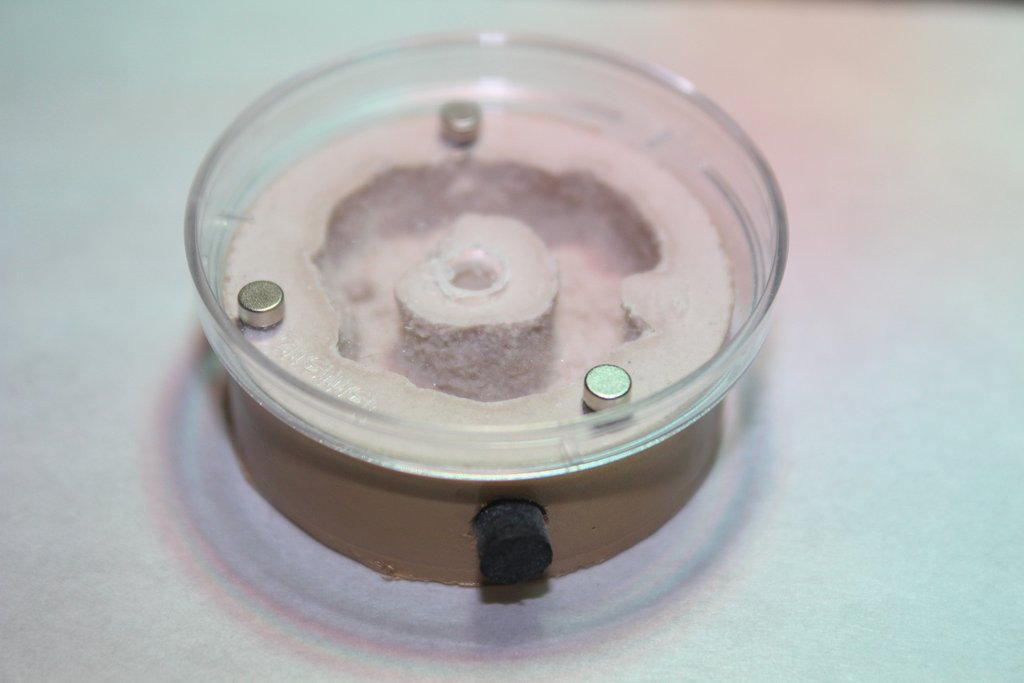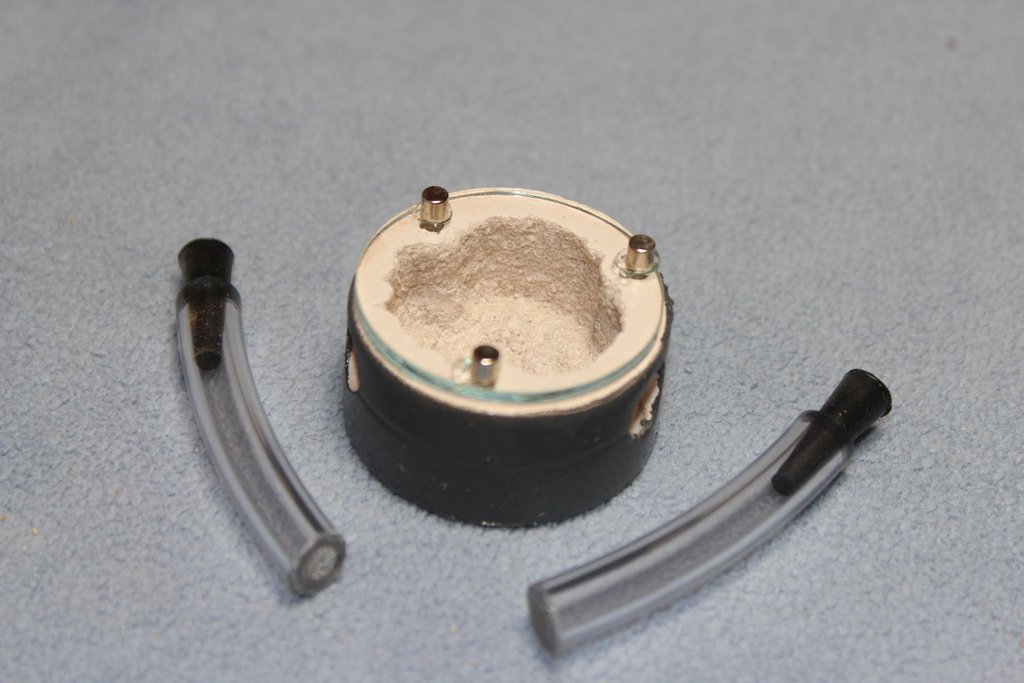Tarheel Ants Atom A, B, or C?
Review Purpose
The purpose of this review is not to criticize, diminish, lessen, embellish, promote or praise any brand, or products. The main concern is to provide ant keepers (novice and expert) our experiences while using commercial formicaria to facilitate their choice when considering which would be the most suitable for their actual, or future queens, and colonies.
Product description
TarHeelAnts formicaria Atom style A,B and C are small round formicariums made of mortar.
Style A – 35x17mm – acrylic lid secured by small magnets, small pipette and one rubber stopper.
Style B – 40x17 mm – acrylic lid or glass lid secured by small magnets, 2 nestmates and 2 rubber stoppers, small pipette.
Style C – 76xN.A – acrylic lid or glass lid secured by small magnets, 1 rubber stopper and syringe.
Common to all is the option of including a foraging area (rectangular or circular for Atom A and B, and circular only for Atom C).
Product purpose, target audience, suitable species
The Atom line is designed to be the founding formicaria for new queens only until they reach the state of early colonies.
Test tubes are the most common starting formicarium used by the majority of ant keepers, but as most are aware they bring some challenges on rearing single queens.
“They are suitable from novice to experts ant keepers”
Some of those problems are the water reservoirs limited life and no possibility of refilling, high humidity levels together with lack of proper hygienic care tend to lead to fungus and mold development. Bacteria present on the water or cotton most of the times develop into water changing color to a wide range of orange, yellow, pink, green, etc, preventing the queen from drinking from it.
Also majority of test tubes are glass tubes, to which many ant species aren’t fully comfortable in. The round shape doesn’t allow them to grasp the surface like they would like to.
The Atom line provides stable, flat ground, made with natural materials, can be pre-hydrated or, depending on the type, hydrated regularly. All have connections that allow early colonies to be transferred, or due to their small size can be placed in TarHeelAnts outworlds or any other outworld of your choice.
They are suitable for novice to experts ant keepers, but the new product owners should read carefully all the indications and see the product introduction videos from TarHeelAnts to become familiar with the different characteristics of the Atom formicariums.
They are advertised for different ant sizes depending on the type of style chosen
(note: but not limited to)
Atom A recommended species: Brachymyrmex, Temnothorax, Solenopsis, Tetramorium, Pheidole, Nylanderia, Colobopsis, etc.
Atom B recommended species: Formica, Camponotus, Aphaenogaster, Solenopsis, etc
Atom C recommended species: Pogonomyrmex, Formica, Aphaenogaster, Myrmecocystus, Camponotus, etc
Price
Regarding the price, each Atom has different options but from cheapest option to most expensive
Atom A - 8.99 USD (single) to 14.99 USD (with outworld)
Atom B - 12.00 USD (single) + 5.00 USD (with outworld) + 4.00 USD (glass lid)
Atom C - 18.99 USD (single) + 5.00 USD (with outworld) + 6.00 USD (glass lid)
My experiences, my mistakes and my recommendations
I bought several Atom A and Atom B. I did not buy any foraging areas or any glass lids.
Being located in Asia, my trial species were very different from those highlighted on the TarHeelAnts site.
My species were Ectomomyrmex, Odontoponera, Solenopsis, Iridomyrmex, Nylanderia, Camponotus, Paratopula and Mystrium (no queen).
My first species were Ectomomyrmex (aka Pachycondyla) and Solenopsis, both inside Atom A. Initially both did very well and compared to test tubes, I would risk to say that they seemed to be at home and immediately laid eggs. As you may notice, I had one fully claustral species (Solenopsis) and one semi-claustral species (Ectomomyrmex).
Unfortunately, and against to what i wrote earlier, I didn’t read or pay much attention to the video and the first time i tried to water the Atom A, I completely flooded it. I was expecting a higher degree of absorption. Even with a few later attempts I found that hydrating the nest was always stressful to the queens. They would feel the humidity level rising and start panicking, so I started reducing the frequency of hydration and also the amount of water to a bare minimum.
“Being located in Asia, my trial species were very different from those highlighted on the TarHeelAnts site.”
My Solenopsis did very well afterwards, and the major problem I had was a garbage pile inside the Atom A, to which I had to transfer them into another nest. In this case I have to say that the magnetic lid workers wonders. Instead of waiting for the ants to find the nest and move on, or use heat source (which can take some time), I prefered a more aggressive approach of removing the lid. It worked wonderfully.
Regarding Ectomomyrmex, the problem was due to having placed a semi-claustral queen in and thinking that she would stay inside. Unfortunately she didn’t and prefered to move out (probably due to the excess humidity). It was a failed attempt and I relocated her to another setup.
I then tried Odontoponera on a Atom B (since she is quite larger species), with only nestmate and customized it (i placed a bit of soil inside since the larvae like to have a “bed” of soil around them to pupate properly). The Atom B was placed on the same outworld as the failed Ectomomyrmex, and ended up doing also very well, with two workers, before i transfered them.
All the other species also did well with the exception of Paratopula (unfertile queen) and Mystrium (no queen on the colony). I also focused more on fully claustral, the Atom line seems more suitable for fully claustral than semi claustral.
Three things I have to point out:
I got some Atom B not totally dried, and they would stick to every surface. I had to place them aside for a while before using them.
I don’t recommend placing the queen in from the top by removing the lid, especially when using Atom A, because its very shallow, if the queens are fast (like mine were), they will quickly come out while you are closing the lid. I squashed one Camponotus and one Iridomyrmex.
Maybe I am not very skilled.
Personally I don’t like the hydration system of Atom B, because re-filling from outside will always push water inside and flood the nest. To properly hydrate, you should remove the nestmate and close the opening, and use a syringe to hydrate through the steel mesh. Removing the nest mate always stresses the queen.
When I bought Atom A and Atom B, Atom C wasn’t out yet. Personally (again) I prefer the water tower hydration system much more. You just need to remember the capacity and refill accordingly without any fears of flooding the nest.
Regarding choosing A, B or C, I guess each have their own trade offs, and it is important to understand them (my mistake for not taking proper time and care to read TarHeelAnts instructions) before buying.
Conclusion
Overall, the Atoms are a good choice and have allowed me to develop some queens very successfully.
The compact design is very attractive, and I love the removable magnet lid, makes it easy to clean after usage. Also the materials used make it very convenient for video and photography as they provide a natural look to them.
I would recommend purchasing one Atom A and,or one Atom C for trial. Honestly I think there are better options on TarHeelAnts instead of Atom B (inception chamber, or mini-heart).



































